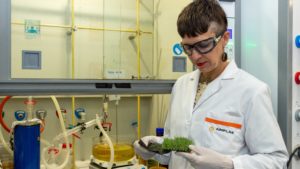New methods for recycling artificial turf waste components

Installations of artificial turf have many advantages, including the number of hours they can be used for sporting activities and the amount of water saved on maintenance. However, when artificial turf reaches its end-of-life phase, which can happen five to ten years after installation, it is very difficult to recycle because it is made of different kinds of plastic that melt at different temperatures and have different viscosities. Not all of these plastics are even thermoplastics, since the secondary backing is made of polyurethane or latex, both thermoset materials. Therefore, an increasing amount of artificial turf waste is being sent to landfills, except for rubber, which is used as a filler in these kinds of installations.
The RECITURF Project, led by AIMPLAS, the Plastics Technology Centre, and with the participation of companies ACTECO and REALTURF, aims to give a boost to the circular economy in this sector through the use of innovative waste processing methods to increase recycling rates and obtain materials of higher quality to ensure their recovery. The project is funded by the Valencian Innovation Agency (AVI) and will focus on developing new recycling processes, including biological/enzymatic degradation and chemical recycling (glycolysis) of the polyurethane backing, which will allow the separation of the different materials for subsequent mechanical recycling. This ensures recovery of the polypropylene, PET and polyurethane that make up this product.
The project results will be a demo sample produced with the materials obtained and an economic assessment of the project. In addition, the project involves the sector’s entire value chain with the aim of making industrial implementation possible.
This project is in line with the new circular economy model, as well as SDG 9 on Industry, Innovation and Infrastructure, SDG 12 on Responsible Consumption and Production, and SDG 13 on Climate Action.